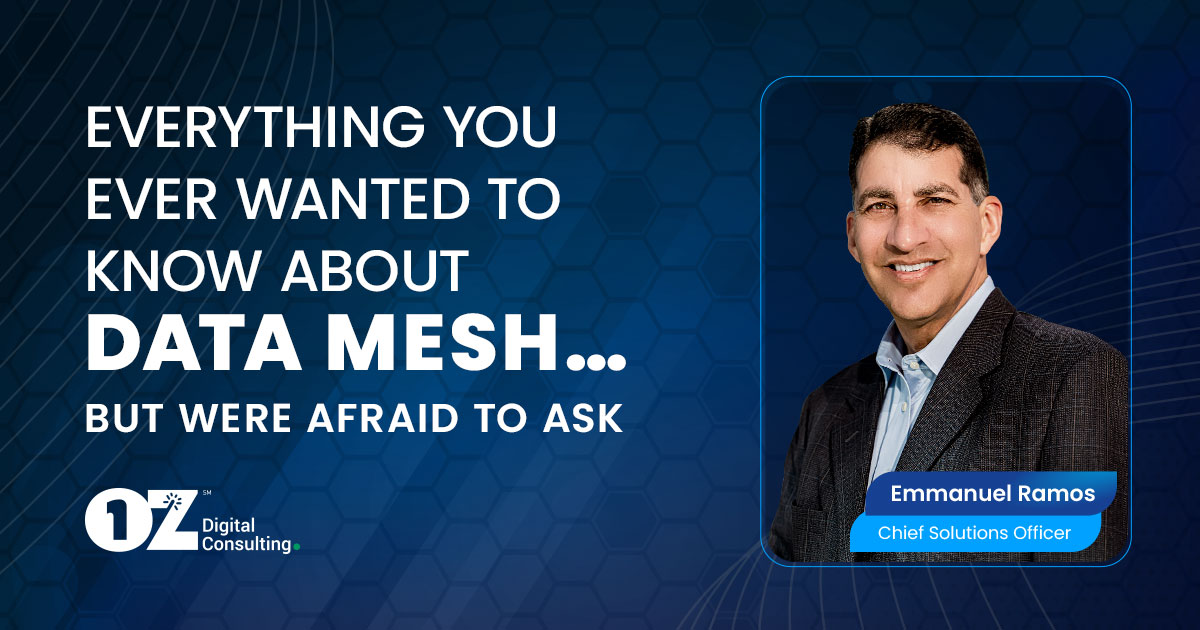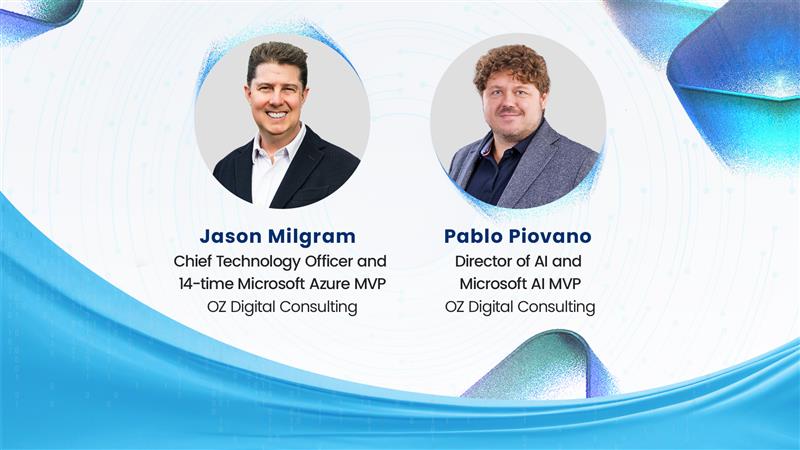For CIOs, CTOs, and other senior executives seeking to stay ahead of the curve in terms of digital transformation initiatives, understanding what a data mesh is—and how it works—is critical.
For those leaders ready to harness the scope and myriad benefits of this powerful cutting-edge data management technology, we present the following concise-yet-thorough guide.
What Is a Data Mesh?
Data mesh is a decentralized data architecture that enables organizations to store and manage their data in a more organized way. It allows for the producers of a given dataset—i.e., those better able to understand its domain—to have more ownership over that data.
It achieves this goal by dividing data within an organization into distinct business domains—marketing, sales, customer service, etcetera—while reducing complexity by allowing users access only to relevant information rather than all available datasets.
The benefits of such an approach include…
-
- Increased efficiency when accessing or manipulating large amounts of data
- Sidestepping the need for complex ETL processes which often require manual intervention
- Dramatically fewer errors associated with these processes
- More time for higher-value tasks
- Secure access control—each user will only be granted access based on their specific role or permission level within the organization’s network structure.
How Does a Data Mesh Work?
A data mesh consists of three main components:
-
- An event bus for real-time communication between services: This enables services to communicate with each other in real-time without having to rely on centralized databases or message queues.
- An API gateway to provide access to all microservices: This allows users to access multiple microservices from one single point, making it easier for developers to build applications using this architecture.
- A distributed database: This stores events as immutable logs which are then used by various services within the system.
With a data mesh architecture, there is no need for centralizing all your organization’s datasets into one place since they can be stored across different nodes in the network.
This helps improve scalability since you don’t have any single points of failure or bottlenecks when dealing with large amounts of traffic or requests coming from different sources at once.
Additionally, because each node only holds part of the total dataset instead of all its parts combined in one place like traditional architectures do, it makes it much harder for malicious actors to gain access to and manipulate your organization’s sensitive information than in traditional centralized architectures.
Advantages of Using a Data Mesh
Data mesh offers several advantages to businesses:
-
- Improved Accessibility and Security: Data mesh allows users to access the data they need quickly without having to navigate complex systems or worry about potential security risks. This makes it easier for organizations to manage their data while also ensuring its safety from unauthorized access or malicious attacks. Additionally, since the data is stored in multiple locations across different domains, it can be accessed more easily by authorized personnel when needed.
- Increased Agility and Scalability: With a data mesh architecture, organizations can respond quickly to changing business needs by making on-the-fly adjustments with minimal disruption of operations. Further, because of its distributed nature, a data mesh can scale up or down depending on demand without compromising performance or reliability.
- Enhanced Governance and Compliance: By separating out individual datasets into distinct domains based on their purpose—such as marketing, sales, and customer service—a data mesh helps ensure that all relevant regulations are met at each stage of the process. This makes it easier for companies to maintain regulatory compliance while still providing efficient access to the necessary information for decision-making purposes.
A data mesh also provides a viable alternative to the traditional monolithic approach of using a single centralized data lake.
Data meshes are designed to be more resilient, flexible, and scalable than data lakes by allowing each system to access its own copy of the same underlying dataset. This allows organizations to quickly respond to changing needs without having to completely rebuild their entire infrastructure or migrate all their data into one place. Additionally, data meshes are designed to be more secure than data lakes since each system is responsible for its own security measures.
Best Practices for Implementing a Data Mesh
To ensure your organization has the right infrastructure, goals, and requirements in place to build an effective data mesh solution you should:
-
- Assess Your Current Infrastructure: This includes evaluating existing systems and applications as well as understanding how they interact with each other. It also involves determining which areas need improvement or require additional resources to support the new architecture. Additionally, assessing your current infrastructure will help identify any potential issues that could arise during the implementation or operation of the data mesh.
- Define Your Business Goals and Requirements: After assessing your current infrastructure, it is important to define clear business goals and requirements for the project. This should include identifying key objectives such as improved security or increased scalability, as well as outlining specific technical requirements like storage capacity or performance metrics needed from the system. Having these goals clearly defined will help guide decisions throughout the rest of the process.
- Choose the Right Technology Stack: Once you have identified your business goals and requirements, you can begin selecting technologies that meet those needs while also providing optimal performance for your environment. Consider factors such as cost-effectiveness, scalability options, compatibility with existing systems, ease-of-use for developers/administrators etc., when making this decision so that you choose a solution that meets all of your criteria without sacrificing quality or functionality.
- Establish clear governance policies: These policies should cover topics such as who has access rights, what types of information are stored on each domain, how long records are kept, etc. By establishing these rules upfront, it helps ensure compliance with regulations while also protecting sensitive information from unauthorized users.
Conclusion
Data mesh is a new approach to data architecture that aims to provide more flexible, resilient, and scalable solutions for managing data across an organization. It provides a decentralized, distributed model of data management that allows organizations to better manage their data at scale while still allowing for autonomy and control over the underlying infrastructure. Data mesh also enables organizations to quickly adapt to changing business needs by providing access to different types of data sources in real time without having to worry about complex migrations or integrations.
Ultimately, it helps companies become more agile and responsive in their decision-making process.
To access expert advice on implementing and leveraging data mesh solutions, contact OZ today.
Contact an Expert:
EMMANUEL RAMOS
OZ Chief Solutions Officer
+1-800-443-5210



